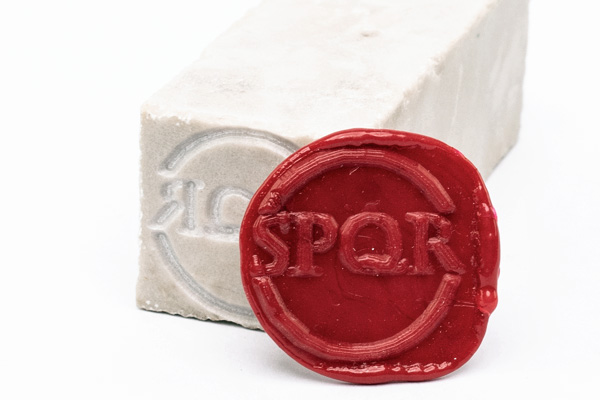Seals & Seals Wax
Antique correspondence
Discover the fascinating world of historical seals! With us at the Roman Shop, you can get a diverse selection of seals and sealing wax that are directly inspired by antiquity.
Add a unique, old-fashioned elegance to your correspondence with our high-quality seals and waxes, which not only seal a message but also decorate.
You will be amazed at how easy it is to master this ancient art yourself. Our range is user-friendly and accessible to everyone, regardless of skill or experience.
Feel the magic as you seal your own message. It is an activity that is not only fulfilling, but also inspiring.
Ordering & shipping
How fast is the shiping ?
Can I also order on account?
Returns
Do we supply to traders and museums?
On the trail of Roman seals
When Roman scribes wanted to make sure that what they had written remained unread, they not only sealed the wax tablet(s) with a string, but also affixed a seal to it. They used so-called seal capsules for this purpose.
To each his own personal seal capsule
In the Roman Shop we have reconstructed common bronze sealing capsules - also with enamel inserts - which date back to the Roman imperial period (1st - 4th century AD). The lid of the Roman sealing capsule was moulded from an original and the body was added. These types of seal boxes were widespread, as several examples have survived.
Sealing with the sealing capsule
The Roman wax tablet was tied crosswise with a string like a small package. The cords were then pulled through the holes in the sealing capsule and knotted inside the capsule. It can be assumed that seal rings or gem rings were used to seal into the soft wax and the capsule was then closed with the lid over it. In some original capsules, the sealing wax has even survived to this day!
When opening the wax tablet, the Roman sealing capsule had to be opened and the wax seal broken. Latin. "cera turbata est".
Sealing wax of the Romans - easy and quick to apply a seal!
And now you also need wax to create the ancient seal yourself with sealing wax. For this purpose, sealing wax sticks are available in the Roman Shop. The wax sticks are simply heated until they begin to drip. The rest is easy! Collect the wax drops on the area to be sealed and press on the sealing stamp!
By the way ...
... wax seals were still in use in the Middle Ages for documents and legal transactions of all kinds! The popes as well as Roman-German emperors and subordinate sealers distinguished themselves by coloured wax seals:
Red wax: emperors or kings (who could also confer the right on other princes, basically only in the case of "sovereigns" under state law).
Green wax: applied to monasteries and convents.
White wax: for free imperial cities.
Black wax was reserved for the Patriarch of Jerusalem and the Grand Master of the ecclesiastical orders of knighthood and is still occasionally used today for letters of mourning.
Schools and authorities in DE can conveniently order on account. Private customers are welcome to use Ratepay purchase on account (Paypal service)
Safe and easy ordering within Germany from 75 €
Always new ideas and optimised products through our years of experience and intensive cooperation with schools and museums.
